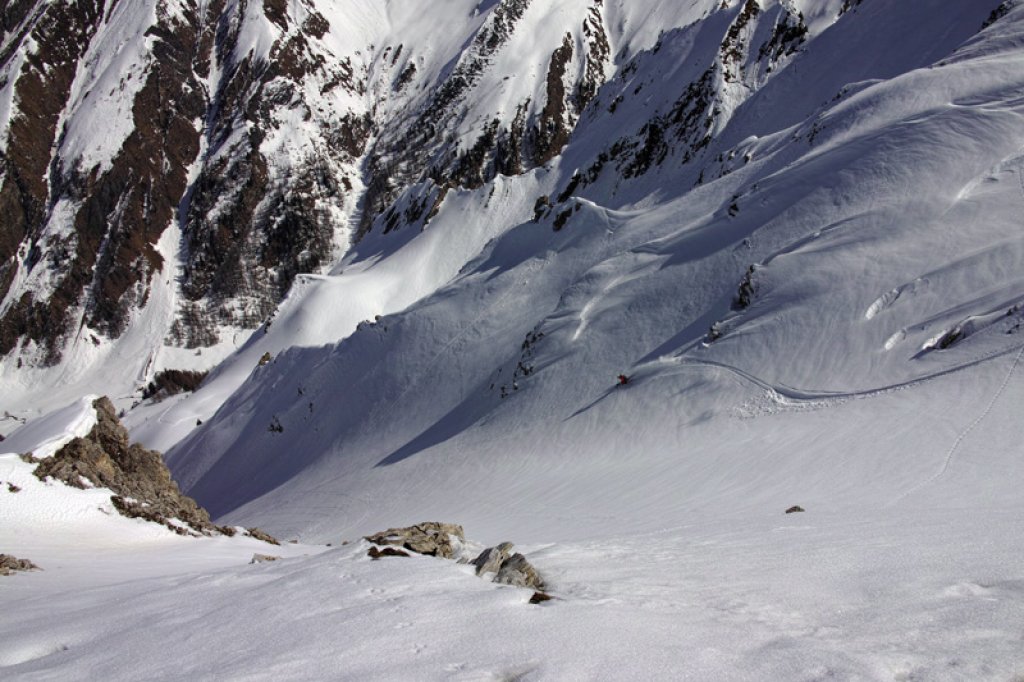Dieser Wetterblog wurde wegen Urlaubsplänen etwas früher verfasst als üblich und erscheint hier mit Zeitverzögerung, so dass wir uns eher mit nicht so aktuellen Dingen beschäftigen. Das Wetter zeigt sich aus heutiger Sicht (Montag) in nächster Zeit zunehmend aprillig, mit etwas tieferen Temperaturen (wie sie im April zu erwarten wären) und gelegentlichen, teilweise auch heftigeren, gewittrigen Niederschlägen. Merke: Die Gewittersaison ist eröffnet!
Widmen wir uns nochmal dem bereits mehrfach erwähnten Saharastaub, da er zuletzt wirklich beeindruckend ausfiel. Vor allem die Wettervorhersagen für den vergangenen Freitag, teilweise auch die für das Wochenende fielen zu positiv aus, da kein Wettermodel den Einfluss von Staub in der Luft einberechnet. Die Modelle sahen Sonnenschein und kaum Wolken, dabei verdeckte ein dichter Cirrenschirm die Sonne und das Wetter war grau und unattraktiv. Der Sand an sich verdunkelt die Sonne nicht, bei geringerer Konzentration sorgt er ja bekanntlich sogar für besonders farbenfrohe Sonnenuntergänge. Durch die vielen Kondensationskeime in der Luft bildet sich aber eine dichte Wolkendecke, die es ohne den Sand nicht gäbe. Dieser Wolkenschirm reicht bis in große Höhen und ist optisch sehr dick, das heißt nur wenig Sonnenstrahlung dringt hindurch.
Damit nicht genug! Der Sand mischt sich weiter ein. Wir wissen, dass die Luft in klaren Nächten stärker abkühlt, als wenn es bedeckt ist. Das liegt in erster Linie daran, dass der Boden Wärmestrahlung abgibt und diese nur bei klaren Bedingungen richtig los wird. Durch Kontakt mit dem kalten Boden, kühlt auch die bodennahe Luft ab. Sich selbst überlassen, würde sie weit weniger abkühlen, daher auch die beliebten Inversionen am Boden im Winter (nur die Luft nahe am kalten Boden kühlt ab.)
Wenn man nun am Oberrand des sandigen Wolkenschirms eben mehr Staub und Sand hat, verhält sich dieser ähnlich wie der Boden und strahlt Wärme in den Weltraum ab. Dadurch sinkt die Temperatur oben an der Wolke. Das wiederum erhöht die Labilität und es kommt zu Hebungseffekten, mitunter bis hin zu Gewittern.
Weiteres hier und hier .
Da der WetterBlog etwas im Stress ist und eigentlich schon hätte packen müssen, präsentieren wir der Leserschaft ansonsten diese Woche lediglich ein paar Links zum freiwilligen Selbststudium:
Gibt es nächstes Jahr einen Super El Nino?
Nach wie vor extreme Trockenheit in Kalifornien
Infos zur aktuellen Schneelage in Norwegen
Hübsches, hochaufgelöstes Satellitenbild von Norwegen
Der WetterBlog meldet sich ein letztes Mal in diesem zu Ende gehenden Winter gegen Ende April nochmal und ist jetzt dann kurz mal weg.






